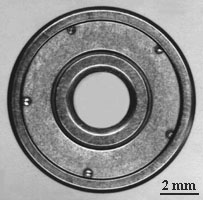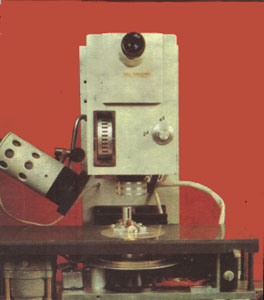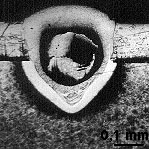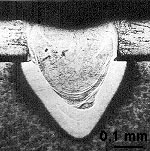

 |  |
| Bearing with spot welded protective washers. Welding deformations do not exceed 0.7 µm. | The laser welding machine. |
Usually, flanging or fastening by spring locking rings is used to join the protective metal washers of bearings. Flanging is very reliable and inexpensive, but tends to produce deformation and so is not used for manufacturing precision bearings. Fastening, by contrast, cannot completely guarantee that leakage of the grease preloaded into the bearing will not occur. Very often, leakage is absolutely impermissible (for example, in bearings for computer hard disk drivers).
Attempts to use laser spot welding for this purpose have yielded good results. Welding deformation is within 0.7÷1.0 μm. The probability of grease leakage decreased, and it proved possible to simplify the shapes of the protective washers and external bearing rings. This technology has been introduced into mass production.
Initial idea (circa 1985) - I. E. Bondarenko (former Deputy Chief Production Engineer of GPZ-4). Researchers and designers - G. P. Sayapin (The head of Laser and Plasma Processing Lab), S. A. Fedosov (the technology, mechanics), G. A. Mordovin (electronics of welding plant).
Correlation between quality of the laser spot welds and their visual appearance [1]:
 |  |
 |  |
| Spot weld with cavity | Spot weld without cavity |